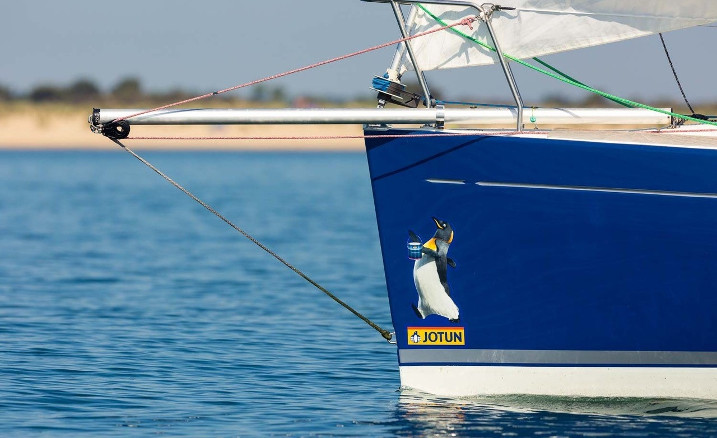GESPONSERTER ARTIKEL

How do antifoulings work & why do we need them?
Antifoulings protect the underwater surfaces of boats from a build up of animal and plant growth such as barnacles and weeds. It’s important to use a strong, effective antifouling, as the more fouling you have on the hull, the more drag through the water and therefore CO2 pollution. Antifoulings also reduce movement of invasive species which can wreak havoc with the local environment.
Antifoulings work by leaching a controlled number of toxic biocides into the water around the boat. Unfortunately, in some locations, such as around some lift out/wash down areas in marinas, these toxic biocides have been allowed to build up in sediment which leads to environmental problems.
What are the new regulations? What do they mean for the future?
The new, stricter regulations, called the Biocidal Products Regulations (BPR), require each antifouling sold in Europe to be approved for use by a competent authority. In order to gain approval, each antifouling must undergo a substantial number of tests and the data presented to the authorities. The objective being to make sure that these products have a reduced environmental impact, whilst at the same time working as an antifouling. They also take into consideration the safety of the average boat owner who applies their own antifouling.
The new regulations have reduced the number of biocides which the paint manufacturers can use – eliminating the ones that were the most toxic to the environment and human health. Importantly, there are still a good range of biocides, including copper, which have been approved for use. What it does mean, now more than ever, is that the science behind the controlled release of these biocides is incredibly important in order to produce a product which performs well, something Jotun has always focused on.
Which antifoulings will they effect?
Whilst the impending BPR regulations have been in the offing for many years, some manufacturers have been caught out. The antifoulings that they have sold in 2017 will no longer be approved for sale and use. They are allowed to be sold through until June 2018 and used by boat owners up until the end of 2018.
Environmental and human health is extremely important to Jotun, so you can rest assured that all antifoulings in the Jotun range are compliant with BPR, and have been for a number of years. Our products have built up a reputation over many years as being strong, effective antifoulings and you can be confident in the knowledge that the paint in a tin of Jotun Yachting antifouling which you used last year and the year before that, is the same paint that you can buy today and in the foreseeable future.
What else can you do to help the environment?
- Prevent antifouling scrapings or spills from entering the water or nearby drains by using a plastic sheet under the hull.
- If you use scrubbing piles – try to only scrub off the fouling – not the underlying paint.
- Check to see if your marina has a wash down facility which collects residues and wash down water.
- Use our website, or email our technical help line, to make sure you choose the best type of antifouling for your boat.